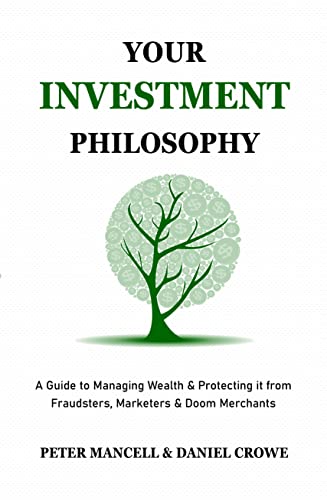What makes for a poor investment? It’s a tough question because anything can be a poor investment. Something can become a poor investment because the person investing didn’t understand what they were investing in. They over-allocated, didn’t understand the risks, and weren’t prepared for the worst-case scenario.
That means good investments can be poor investments, but poor investments will always be poor investments. While that might not clear things up, it’s more about the decision making behind the investment. Feelings are often the justification for poor investments, and are a shortcut to bypass logic, data, or rigorous analysis.
Feelings can be based on conventional wisdom. For example, thinking something will always have high demand. We once had an investor explain their portfolio was heavily weighted to Australian REITs because of how robust Australian commercial property and office space was. High demand would always be there.
Office vacancy rates were at record lows around 3-4% in Sydney and Melbourne going into 2019. After a global pandemic, work from home, and office workers resisting the push to go back into the CBD, today those vacancy rates in Sydney and Melbourne hover around 15%. REITs are fine as 5-10% of a portfolio, but it’s an example of how being overweight in them becomes a poor investment.
Conventional wisdom is positively robust compared to other feelings. One powerful feeling that will be used to justify an investment is nostalgia. It could be a house someone doesn’t want to part with because a family member lived in it. It could be inherited shares in a company the deceased owned for years. Or just owning a company because a person has an affinity due to past experience.
When thinking about nostalgia, you’d be hard pressed to find a company that evokes nostalgia more than Disney. For almost 100 years Disney has been entertaining people around the world with family friendly entertainment that’s linked generations. Maybe you’ve enjoyed their movies, had a favourite Disney character, owned any of their memorabilia, had the fortune to visit one of their theme parks as a child (or even as an adult), or just have an interest in their storied history. Many people feel a connection with Disney as it evokes warm memories for them.
Several of these reasons were once mentioned to us by an investor as the rationale for owning Disney stock in the US. They just liked Disney as a company. They’d been to the theme parks, and it was a good experience. Owning the stock made them feel good because of good times they had with Disney.
Thankfully, it wasn’t a huge purchase because lately being an investor in Disney hasn’t felt as good. While very long-term holders are still sitting on nice gains, Disney’s stock price is down about 25% over the past 5 years, and now sits near a nine-year low.
What’s behind Disney’s woes? The entertainment world is going through a transition. Financially Disney did post a loss in the last quarter, mostly due to impairments and write downs, but has been mostly profitable since troubles over the pandemic. They earn a healthy amount of revenue from their theme parks, which were shut for Covid reasons, but are now running again. However, across the company, earnings are less than half of what they were pre covid.
Their TV channels have been shrinking. Disney owns major network ABC in the US, where ad spending is down and there are less eyeballs on free to air TV. They also own 80% of cable sports network ESPN. While ad spending is up at ESPN, US viewers are dropping cable, while ESPN faces more competition for sports rights from new entrants like Amazon and Apple.
On the TV front, it sounds like Disney CEO Bob Iger is already writing off the TV channels as a source of growth. He suggested in the recent quarterly call that growth will be expected to come from three areas: theme parks, movies, and streaming. In those areas Disney has also run into trouble. As we’re in a complicated world, Disney found itself in a culture war with Republicans in the US. As this April 2022 article explains:
Disney came under fire last month by many in the LGBTQ+ community, including some Disney employees, for initially failing to take a public stand against the “don’t say gay” measure, then condemned the legislation and said it would pause all its political donations in Florida. That set off a storm of condemnation against the company by many Republicans.
What followed was the Florida government dishing out some retribution to one of the largest private employers in Florida.
Florida legislators passed a bill on Thursday that would revoke Walt Disney Co’s special tax status in a move widely seen as tit-for-tat for the company’s opposition to a new “don’t say gay” state law limiting discussion of LGBTQ+ issues in schools.
Florida Governor Ron De Santis even threatened to build a prison near Disney’s Florida theme park.
On the movie front, Disney has seen some expensive flops this year. The Little Mermaid, Ant-Man & the Wasp: Quantumania, and Indiana Jones and the Dial of Destiny look to be big budget losers. When movie production costs get into the $200 to $300 million range it becomes a lot harder to make that money back when it costs almost as much to then market the movie. Bob Iger is now suggesting movie production will have to become more cost conscious.
Disney purchased Marvel in 2009 for $4 billion and LucasFilm (the home of Star Wars) in 2012 for $4 billion. Both have made Disney money since, but things are getting clouded. Since Marvel started what’s termed the Marvel Cinematic Universe in 2008, they’ve released 32 films and 9 television series. Though due to licensing not everything has been released through Disney. The more recent offerings have struggled and viewers are starting to get exhausted by so many superhero movies.
Over at LucasFilm, it seemed buying Star Wars, arguably the most valuable piece of entertainment intellectual property available, would be a license to print money. It started out that way when Disney released its first Star Wars movie “The Force Awakens” in 2015. It made over $2 billion at the box office, but the next film in the trilogy “The Last Jedi” was divisive and alienated many fans. By the final film in the trilogy “The Rise of Skywalker”, the box office had halved.
Disney also released “Solo: A Star Wars Story” in 2018, which did the unthinkable and lost money. It seemed LucasFilm and Disney had no cohesive plan for the franchise. Ironically, it also turned off many fans by treating some of its best loved and most nostalgic characters like Luke Skywalker with contempt. In response, Disney decided to pause making Star Wars movies and make Star Wars TV shows for its streaming service Disney+.
Bringing us to streaming. Despite having around 150 million subscribers across its streaming platforms globally, Disney+ lost $512 million in the most recent quarter and has lost $11 billion since its inception in 2019. Disney is now facing multiple lawsuits claiming it has tried to inflate its streaming success, concealed streaming costs, and attempted to hide losses in other divisions of the company. Disney forecast global streaming subscribers to be 230-260 million and reach profitability in 2024. It appears unlikely to reach those numbers.
Owning a company like Disney might feel nice and evoke nostalgia, but this highlights how complicated owning individual companies can be. No matter how nostalgic someone might feel about Disney, it’s in a ruthless business and the world’s always changing. Companies are forced to continually adapt. If you like how a company makes you feel, buy their products. No need to hitch your portfolio to their fortunes, which may not be as good as their nostalgic past.
This represents general information only. Before making any financial or investment decisions, we recommend you consult a financial planner to take into account your personal investment objectives, financial situation and individual needs.




